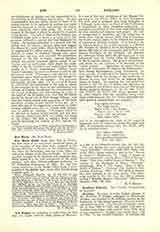

Ave Regina, an antiphon so called from its first line. Ave regina ccelorum (Hail Queen of Heaven). It is one of the four Antiphons of the Blessed Virgin sung in the Divine Office in turn throughout the year, and is assigned thus from Compline of February 2 (even when the Feast of the Purification is transferred) to Holy Thursday exclusively. It comprises two stanzas of four lines each, followed by its own versicle and response and prayer. Its date of composition is uncertain, but the conjecture of Stella (Inst. Liturg., Rome, 1895) that it antedates the fourth century seems to be without any warrant of external or internal evidence. It is found in the St. Alban’s Book of the twelfth century; in a Munich MS. thought by Daniel to be of the thirteenth; in a Sarum Breviary of the fourteenth; and in York and Roman Breviaries of the fifteenth. Th. Bernard [Le Breviaire (Paris, 1887), II, 454 sqq.] says it was introduced into the Divine Office by Clement VI in the fourteenth century. He gives a commentary, and thinks he can perceive in it elements of the “noble accents…aspirations of many Doctors, such as St. Athanasius, St. Ephrem, St. Ildephonsus”. Said during Septuagesima, Lent, Passiontide, the time, namely, of preparation for Easter, it recalls the part Mary had in the drama of the reopening of Heaven to men, and shows her as reigning there, Queen of Angels. Its opening line was sometimes quoted as the first line of hymns and sequences in the fourteenth and fifteenth centuries (cf. Dreves and Blume, Analecta Hymnica, I, 94; X, 103; XXX, 238; XXXII, 43; XLVI, 136) which, however, had no other relation with the Antiphon, being sometimes meditations on the Ave Maria, sometimes distinct poetical compositions, for example:
Ave regina ecelorum,
Pia virgo tenella,
Maria (virgo), flos florum
Christi (que) clausa cella.
Gratia, quae peccatorum
Dira tulisti bella,
and so on, throughout the whole of the Angelical Salutation down to ventris tui, where the poem ends (MS. of fourteenth century) (loc. cit., XLVI, 136). Or, as a distinct hymn:
Ave, regina ecelorum,
Ave, decus angelorum,
Ave, gaudium sanctorum,
Ave, solis regia,
in a MS. of the fifteenth century (loc. cit., XL, 98). The Ave Regina has been translated by Caswall, “Lyra Catholica” (London, 1849, 1873, 1884; New York, 1851), whose version is used in the “Manual of Prayers” (Baltimore), 77: “Hail, O Queen of Heaven enthroned”; also by Beste, “Church Hymns” (1849) “Hail, thou mighty Queen of Heaven“. The version in the Marquess of Bute’s “Breviary” (Edinburgh, 1879, I, 177) begins: “Hail, O Mary, Queen of Heaven“. Schlosser [Die Kirche in ihren Liedern (Freiburg, 1863), I, 251] gives a translation into German in the same metre. The plainsong melody in the 6th tone has also a simpler setting [” Manuale Miss ae et Officiorum” (Rome and Tournai, 1903), 100, 103].
H.T. HENRY

